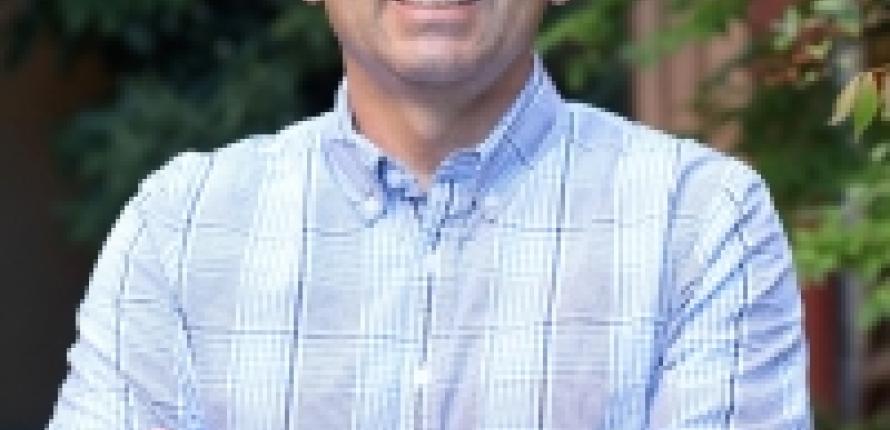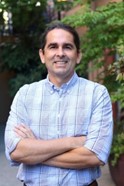Across the Border: Shared Indigenous Experience in North America


This Native American Heritage Month, we’re highlighting the contributions of outstanding Fulbrighters who live the Fulbright mission through the ways in which they express their identities and their goals. In this Q&A, Fulbright Scholar Alumni Ambassador Brian Klopotek shares his experiences in Mexico, where he learned about Indigenous communities of Mexico, and shared his knowledge of Native Americans.
Brian Klopotek is Associate Professor and Department Head of the Department of Indigenous, Race, and Ethnic Studies at University of Oregon, Eugene. Brian taught Native American studies classes as a U.S. Studies Chair, and a U.S. Embassy-sponsored Spanish language class for an Indigenous youth leadership program primarily for Indigenous Mexican college students, at Universidad de las Americas in Puebla (UDLAP), in Cholula, Puebla, Mexico.
- Tell us a little about your path to Fulbright. Who or what inspired you to apply?
I was invited by Chief John Procell of the Choctaw-Apache Tribe of Louisiana to meet with the tribal council about their petition to become a federally recognized Indian tribe. As a community with roots in the Spanish Empire's 18th-century frontier presidio at Los Adaes (contemporary western Louisiana), they have Indigenous heritage from multiple U.S. and Mexico-based tribes.
As I examined their interaction with U.S. federal tribal recognition procedures, I could see that these regulations created a space where multiple conceptions of indigeneity and race came to bear on the tribe. Rather than focusing on the policy itself, however, I wanted to scrutinize the modes of thinking it revealed to illuminate broader patterns of thought in the United States, Mexico, and the world around what constitutes Indigeneity and Indigenous peoplehood.
I am a specialist in Native American studies and studies of race and ethnicity in the United States. I knew that I had serious gaps in understanding histories and issues of Native peoples and the national culture in Mexico. If I wanted to be able to talk about how Indigeneity in constructed in Mexico with any kind of legitimacy, I needed to experience life in Mexico for an extended period of time: The Fulbright Program was clearly the best opportunity to do so.
- Tell us a little about your Fulbright research topic and project. What did a typical day as a Fulbrighter look like for you?
I was a Fulbright García-Robles U.S. Studies Chair, teaching at the Universidad de las Americas-Puebla for one semester of my six-month stay. I taught English language courses on U.S. Native American studies, and my students were fantastic—I still keep in touch with several of them. In my off time, I conducted research and went on field trips with students and colleagues. My family in tow, we made sure to visit my wife’s family in Aguascalientes, in addition to visits to Oaxaca, Veracruz, Mexico City, and elsewhere. Part of my goal was to get a feel for Mexican national culture and Indigenous lives, so those visits were informative for me as a first-timer in Mexico.
After the semester was over, I taught an Indigenous environmentalisms class for the Programa de Liderazgo para Jóvenes Indígenas (Indigenous Youth Leadership Program), where approximately 25 Indigenous college students, primarily from Mexico, come together for a month and work on leadership projects at UDLAP. This class was conducted entirely in Spanish. The program has been running for about 10 years and is partly sponsored by the U.S. Embassy.
- How did your identity play a role in your Fulbright experience?
One of the important goals of the Fulbright Program is people-to-people diplomacy: building bridges and international understanding at every level. I’m a Choctaw and a Native studies professor, and for me, it was important to serve as an ambassador from Native peoples of the United States to both Native and non-Native peoples of Mexico.
I wanted to build connections and common ground while I was there and when I returned. Meeting and interacting with Indigenous college students from Mexico in the Indigenous Youth Leadership Program was deeply rewarding. They shared many of the same concerns, and even mannerisms, as Native students in the United States, in addition to having some unique contours to common problems.
- What is your biggest takeaway from your Fulbright?
There are so many takeaways that it’s hard to pick just one, but I guess I’ll just say: I would recommend Fulbright to anyone who is evenly remotely considering it.
- What impact did your research or studies make in your career and local communities?
With Grupo Abiayala, a collection of scholars, I’ve been working to build a hemispheric version of Indigenous studies, crossing language barriers and explaining cultural confusion between North American and Latin American Native studies. There are so many lessons we don’t see if we have only a limited imagination of what Indigenous can mean. If we start from many centers, we can build out relational understandings of Indigenous studies that move us forward together.
As a result of my Fulbright, I’ve built lasting connections and intellectual community with scholars in Mexico, leading to jointly authored publications. At University of Oregon, I taught a class on relational Indigenous and Latinx studies that received glowing reviews from students, a direct result of my research-based and experience-based teaching. My experiences gave me a better sense of empathy and understanding of Latinx student perspectives in my class, and helped me convey the value of these connections to my Native students, in addition providing to the benefits to the whole class.
Since returning, I’ve worked on building our undergraduate Indigenous Studies Exchange program with University of Otago, New Zealand to include a scholarship for Indigenous students to do Indigenous studies work in a Latin American university. I can talk to students about these opportunities in a more informed way and guide them through some things they should anticipate.
Additionally, in Mexico, some of my non-Native students have begun working to challenge the use of a Native mascot at their school, due to classroom conversations we had about U.S.-based mascots. The Indigenous Youth Leadership Program now has Indigenous representatives on the selection committee, a value I was taught by strong Indigenous nations of the United States who have demanded their voices be centered.
- How can Native/Indigenous students and students be supported and included in international education?
Native and Indigenous people travel a little differently than other people: we’re acutely aware of colonial relationships. We’re not always interested in national level diplomacy, but Indigenous-to-Indigenous connections are appealing. We need to highlight and facilitate those connections, for example, by working with tribal colleges in the United States and with intercultural universities in Mexico, in addition to mainstream universities. When I was younger, I didn’t necessarily think of Indigenous peoples elsewhere in the same way as I do now, so highlighting those shared experiences would be one way to draw people in and ensure that Native students have these kinds of enriching experiences.
